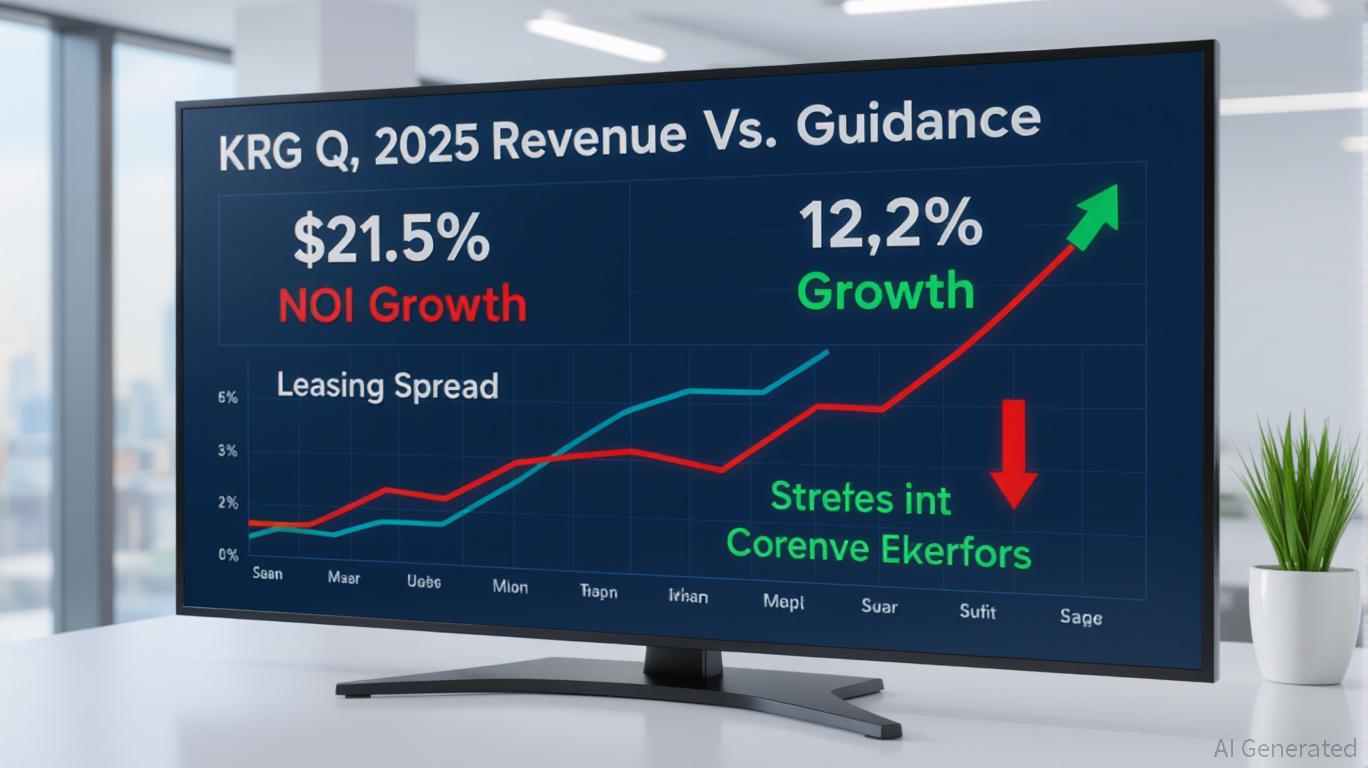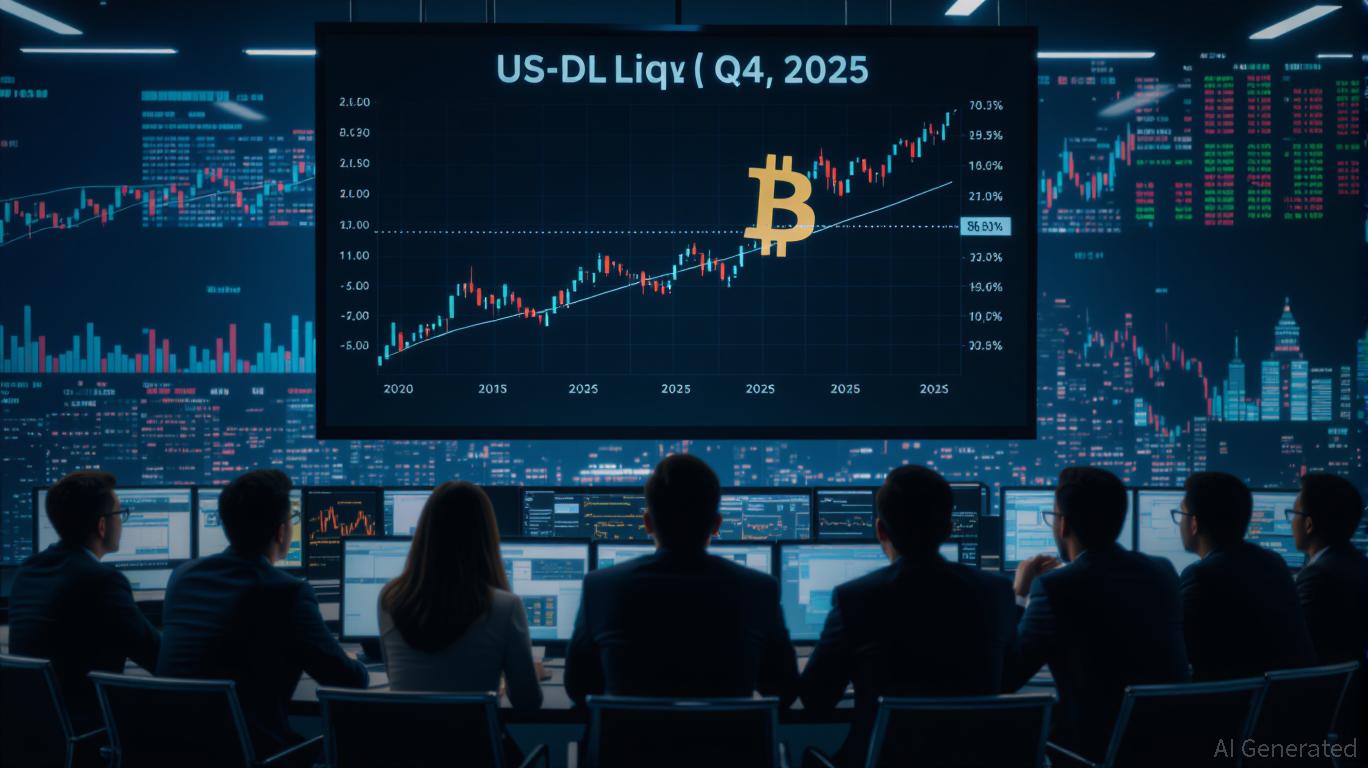Kite (KITE) Price Forecast and Market Outlook After Listing: Assessing Value, Institutional Engagement, and Near-Term Volatility Concerns
- Kite Realty (KRG) reported $4.82M Q3 2025 revenue shortfall despite 2.1% NOI growth and 12.2% leasing spreads. - Institutional ownership at 90.81% with $1.2B liquidity supports strategic grocery-anchored retail focus showing 56% leasing spreads. - Analysts cut price targets to $23-$26 while industry faces "F" rating due to macroeconomic risks and lack of sustainable earnings.
Valuations: Operational Progress Amid Earnings Challenges
Kite’s financials for Q3 2025 showed revenue falling short by $4.82 million, with actual revenue at $205.05 million compared to the projected $209.87 million, based on the
The company’s emphasis on grocery-anchored properties, which now make up 79% of its retail weighted average base rent (ABR), has led to strong leasing performance. From 2022 through Q3 2025,

Institutional Interest: High Ownership and Strategic Endorsement
Institutional investors continue to hold a significant stake in KRG, with 90.81% of shares owned by such entities, according to the
This institutional support is bolstered by KRG’s solid financial position. The company reports a net debt-to-adjusted EBITDA ratio of 5.0x and has $1.2 billion in available liquidity, as per the
Short-Term Volatility Risks: Analyst Revisions and Sector Challenges
Despite its operational achievements, KRG is not immune to short-term market risks. Recently, analysts have lowered their price targets, with Raymond James adjusting from $28.00 to $26.00 and Wells Fargo from $24.00 to $23.00, as indicated in the
Sentiment is further dampened by the broader retail REIT sector, which currently holds an "F" rating due to economic uncertainty, as noted in the
Conclusion: Balancing Strength and Uncertainty
Kite Realty Group Trust’s journey after its listing illustrates the ongoing balance between operational robustness and financial unpredictability. While strong leasing results and institutional backing provide a base for future value, short-term earnings misses, analyst downgrades, and sector-wide challenges threaten price stability. Investors should carefully consider these dynamics, as KRG’s valuation ultimately depends on its ability to convert operational gains into steady profit growth.
Disclaimer: The content of this article solely reflects the author's opinion and does not represent the platform in any capacity. This article is not intended to serve as a reference for making investment decisions.
You may also like
The November 2025 Bitcoin Leverage Liquidation Event: Exposing Systemic Vulnerabilities in DeFi Lending and Margin Trading
- The 2025 Bitcoin leverage liquidation crisis exposed critical DeFi vulnerabilities, triggering $1.3B in liquidations and destabilizing protocols like Balancer and Stream Finance. - Exploits in stable pools and opaque Curator models caused $160M in frozen funds, with Euler facing $137M in bad debt after Stream Finance's xUSD collapse. - Experts warn of systemic risks as DeFi's interconnectedness amplifies failures, while solutions like RedStone's Credora aim to address real-time credit monitoring gaps. -

Bitcoin's Value Soars in November 2025: Key Macroeconomic Drivers and Growing Institutional Embrace
- Bitcoin's November 2025 surge was driven by U.S. government shutdown-induced liquidity shifts and institutional adoption of ETFs. - BlackRock's ASX Bitcoin ETF launch and JPMorgan's $343M IBIT holdings signaled growing institutional confidence in crypto. - Harvard's $100M ETF allocation and staking-based products like Bitwise's Solana ETF highlight systematic capital inflows into crypto. - Despite $578M ETF outflows in November, Bitcoin's correlation with liquidity (0.85) and global regulatory alignment

Modern Monetary Theory and Market Outlook for 2026: Does Bold Investment in Stocks and Emerging Economies Make Sense?
- Modern Monetary Theory (MMT) sparks debate in 2025 as governments expand fiscal spending amid inflation and AI-driven economic shifts. - Proponents argue deficit spending boosts growth, while critics warn of inflation risks and fiscal unsustainability as U.S. deficits hit $7 trillion. - Fed officials clash over policy: Hammack prioritizes inflation control, while Jefferson advocates patience as AI reshapes labor markets. - MMT-driven liquidity could lift emerging markets if Fed rates stay low, but sudden

The Emergence of Hyperliquid and What It Means for Retail Crypto Traders
- Hyperliquid dominates 73% of Q1 2025 crypto trading with its HyperBFT blockchain, 0.2-second block times, and transparent HLP liquidity pools. - The platform maintained 100% uptime during 2025's market crash, processing $10B in liquidations while Binance faced outages and refunds. - 21Shares filed an ETF for Hyperliquid's HYPE token (now 11th largest crypto at $12.6B), while $645M in buybacks boosted institutional confidence. - Hyperliquid captured 15% of Binance's volume via permissionless market creati
